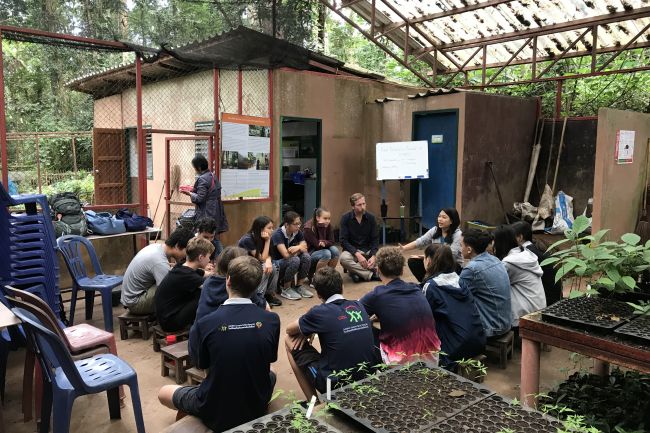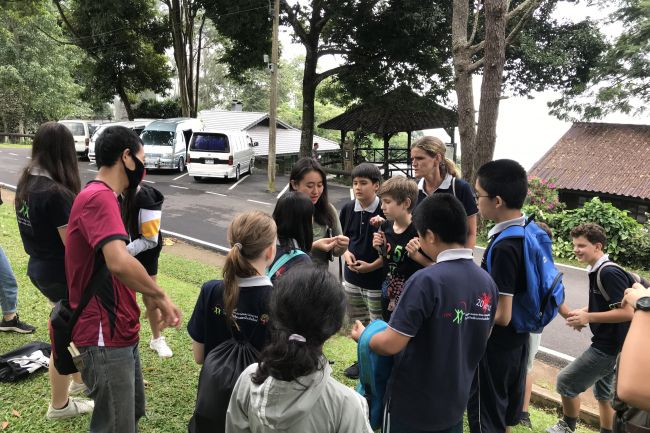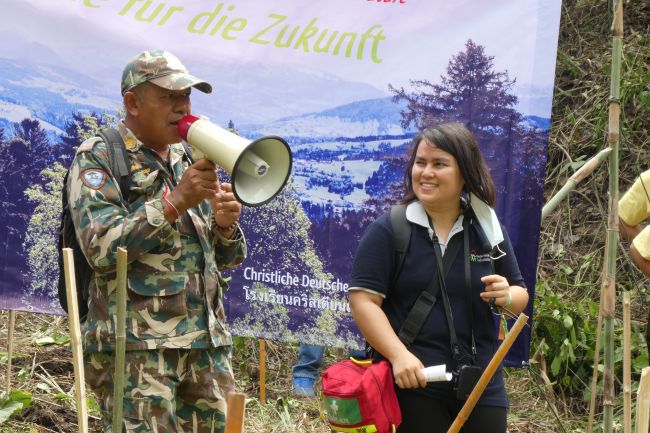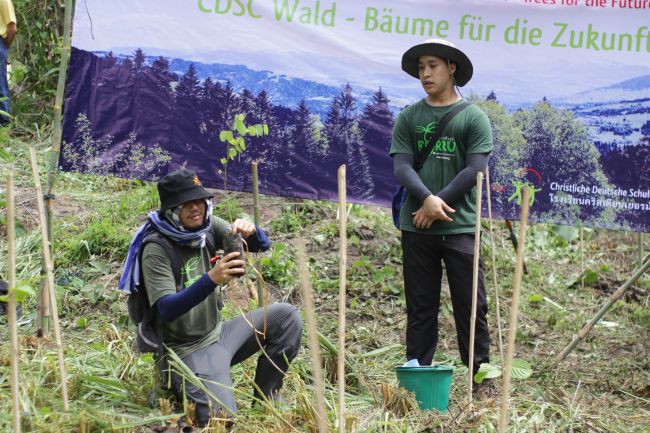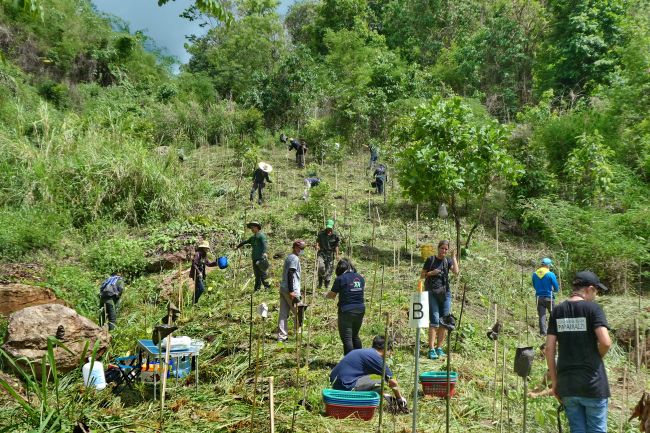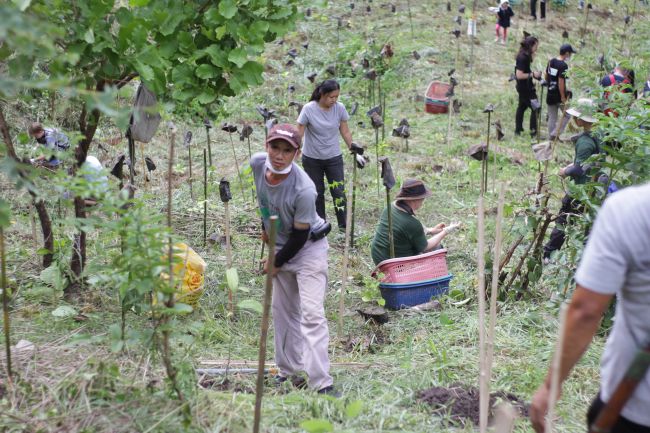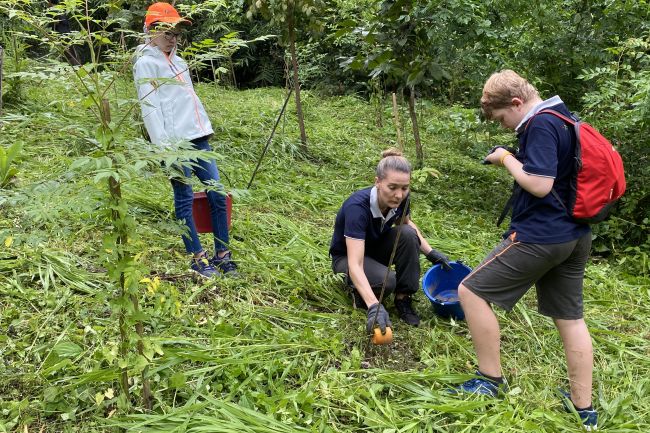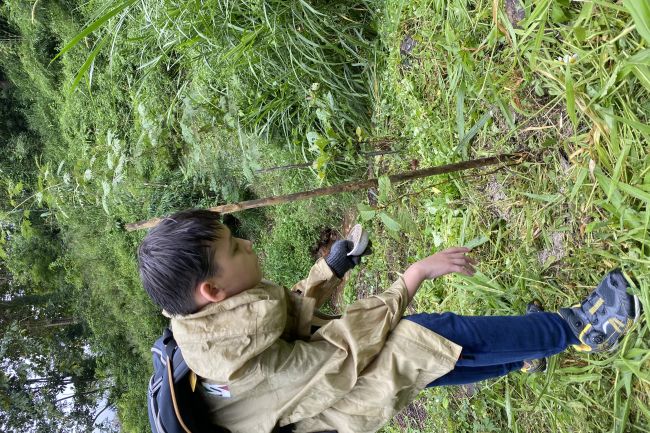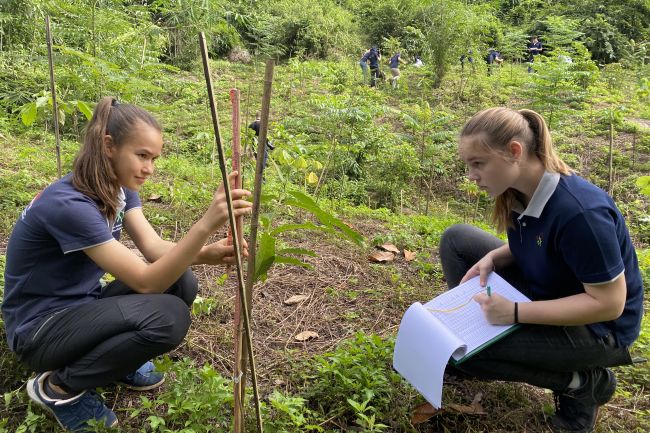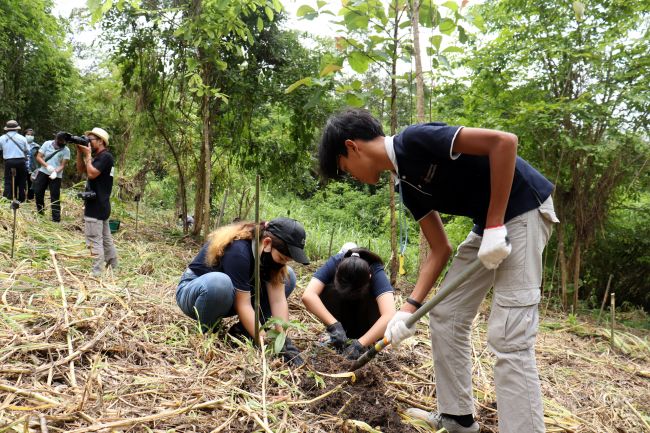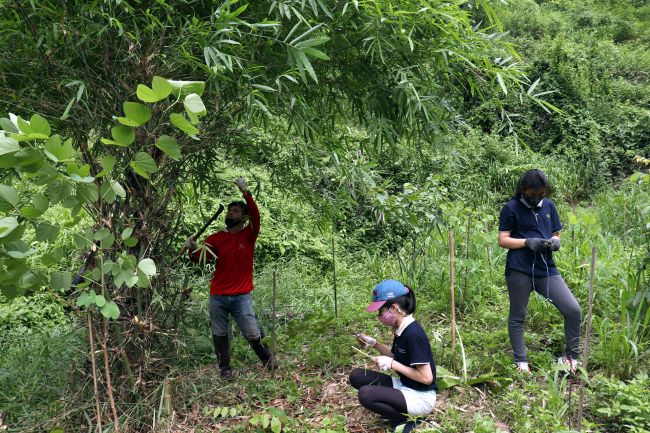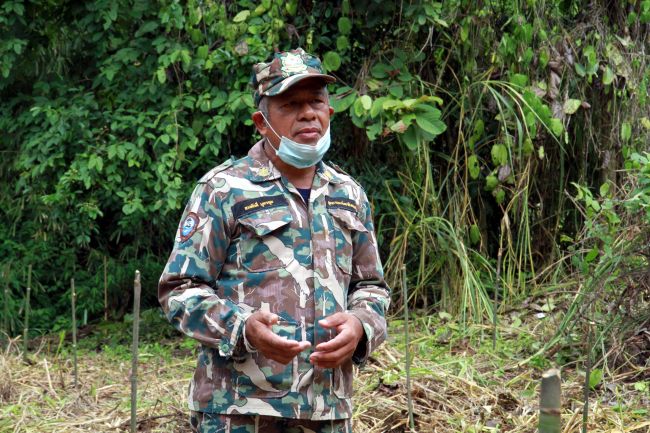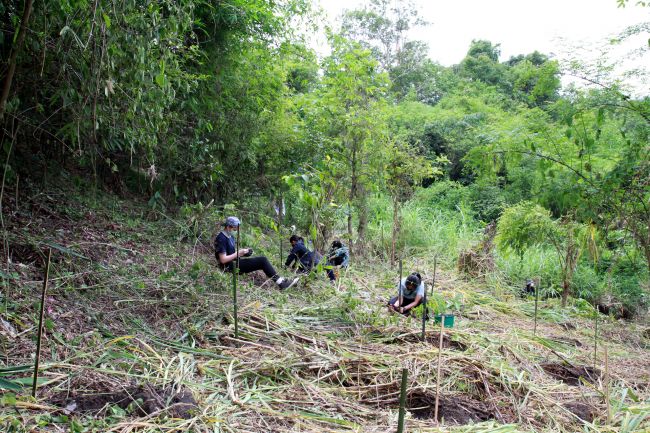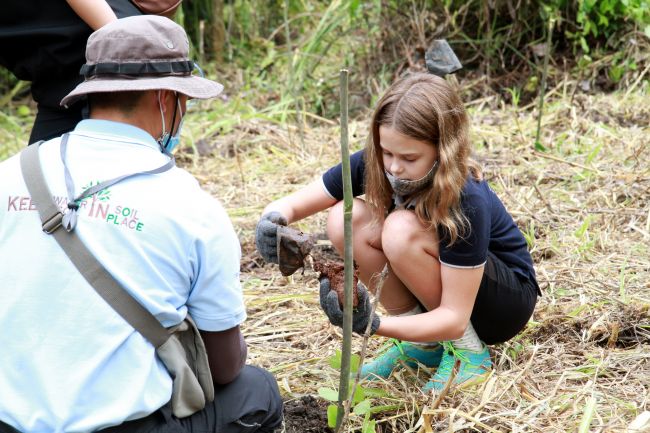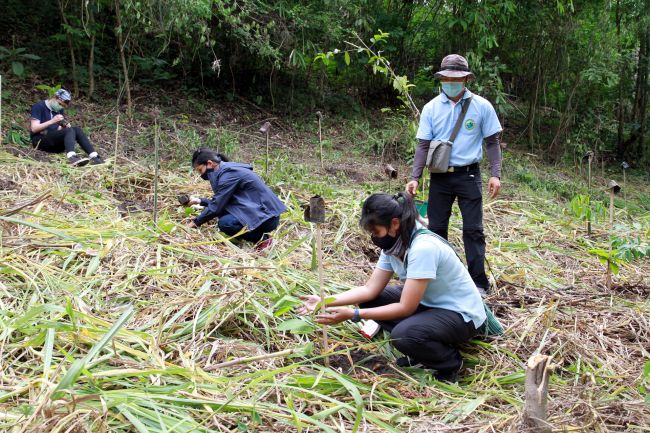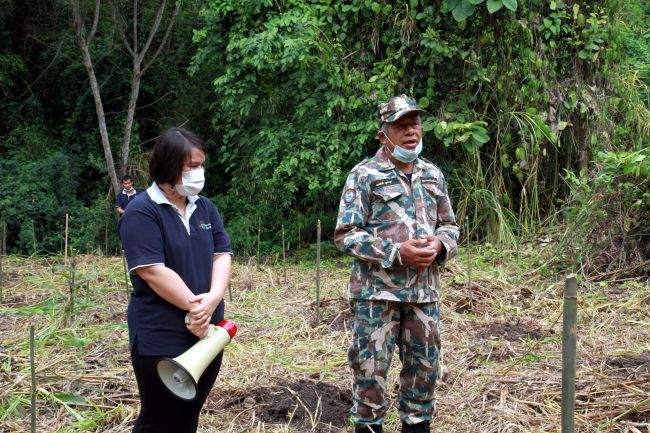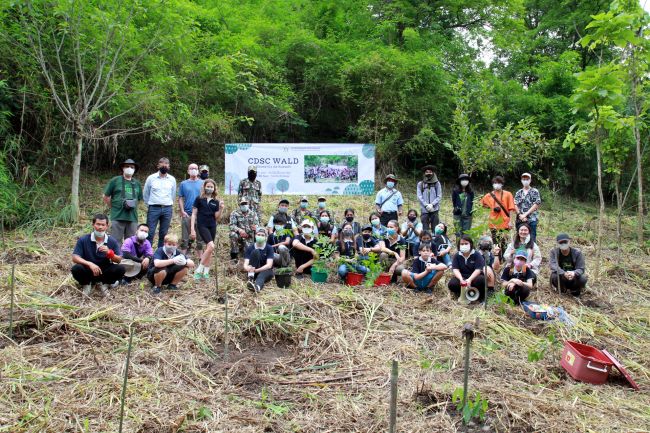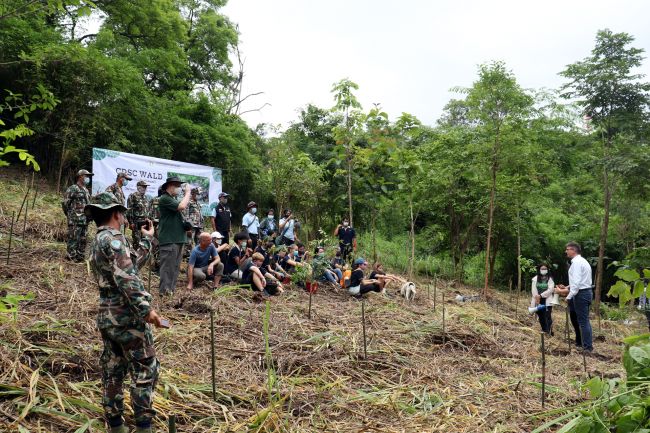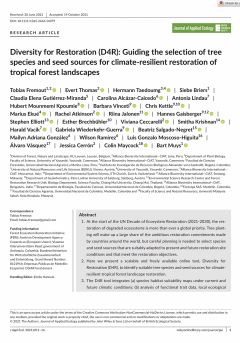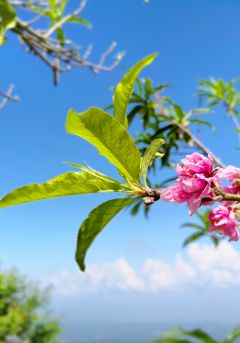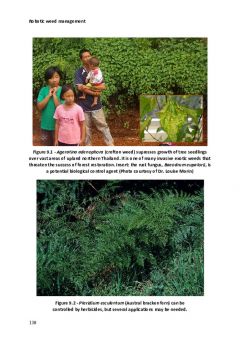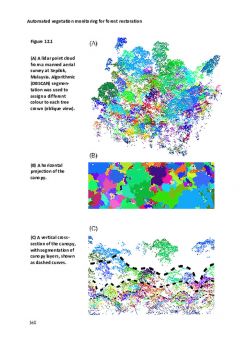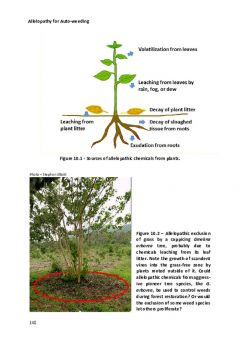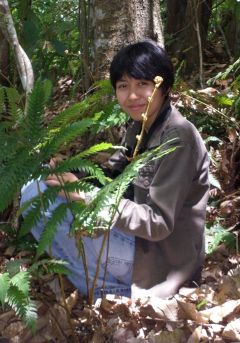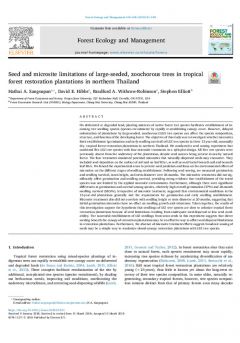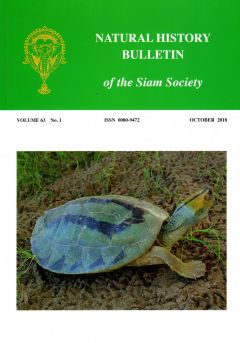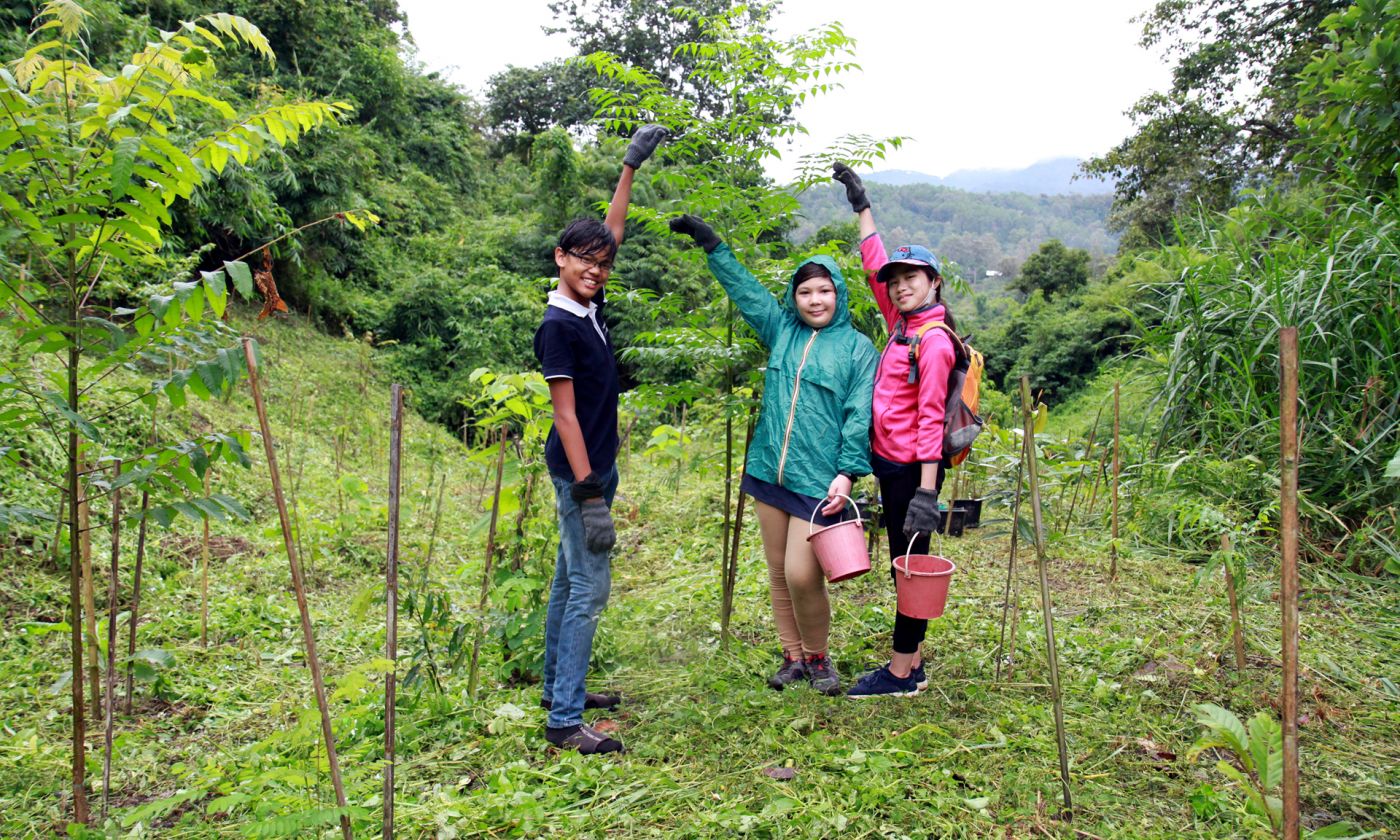
This project is helping to offset the carbon footprint of Christian German School Chiang Mai (CDSC) and generate data on the suitability of candidate framework tree species for restoring mid-elevation bamboo-deciduous forest. It is also providing novel environmental education activities for the school's pupils.
The project plan evolved during the last quarter of 2019, and several preliminary activities were implemented, including the participation of pupils in tree seed collection, the establishment of a school tree-nursery, promotion of the project during the school fair, and tuition provided to students in tree care and tree nursery management. A site near Ban Meh Meh (Mae Rim District) was selected for the project, in collaboration with the Mae Sa Watershed Unit and planted at the start of the rainy seasons in 2020 and 2021. A total of 1,016 trees (26 species) were planted on the 2020 plot across almost 3 rai and 376 trees (24 species) on the 2021 plot over 1 rai. CDSC pupils and teachers were joined by FORRU-CMU staff, as well as Mae Ram Sub-District Municipality officers and local villagers for planting, maintenance and monitoring of the sites. The trees were cared for by weeding and fertilizer application 3 times over each rainy season. Monitoring for tree survival and growth was implemented at the end of each rainy season. The work at the Ban Meh Meh sites was completed in December 2022. The trees are growing well above the weeds and are on track to meet the school's carbon offset target. The project also generated an enormous amount for species-performance data. For more on that, please access the project report through the download panel.
The school continued with it's carbon-offsetting program by planting another plot at Mon Cham in 2022 - more on that project coming soon
 Related articles from the Christian German School Chiang Mai (CDSC)
Related articles from the Christian German School Chiang Mai (CDSC)
- Beginning of the CDSC Forest: 25th Anniversary of CDSC in 2019
- Class Trips and Opening of the CDSC Tree Nursery
- Planting Day on June 16, 2020
- It doesn’t work without care!
- Project Funding: Donation Run for the CDSC Forest
Ban Meh Meh 2020
Ban Meh Meh 2021
Training & Outreach
Every restoration project should provide learning experiences to all stakeholders. Find out how to include education and training in your projects here.
Biomass, Carbon Accumulation & Climate Change
About half the biomass of a growing forest is carbon – that means forest restoration can help to mitigate global climate change. Learn more here.
11: Diversity for Restoration (D4R): Guiding the selection of tree species and seed sources for climate-resilient restoration of tropical forest landscapes
ABSTRACT: 1. At the start of the UN Decade of Ecosystem Restoration (2021–2030), the restoration of degraded ecosystems is more than ever a global priority. Tree planting will make up a large...
12: New allometric equations for quantifying tree biomass and carbon sequestration in seasonally dry secondary forest in northern Thailand
ABSTRACT: As tropical deforestation and forest degradation accelerate, carbon-credit trading could provide a financial incentive to preserve and regenerate forests. Since carbon trading relies on...
13: Allelopathic Effects of Prunus cerasoides Buch.-Ham ex. D. Don Leaves on Common Weeds in Forest Restoration Sites
ABSTRACT: Weeding by hand tools is the most expensive part of forest restoration projects, so herbicides are an attractive alternative weeding technique. However, synthetic herbicides may have...
14: Innovation and robotics in forestry weed management
ABSTRACT: Traditional and established methods of weed management are outlined, from hand-weeding, to the use of herbicides and biological control. Recent new developments in detection and control...
15: Automated vegetation monitoring for forest restoration
ABSTRACT: We discuss the potential of automating vegetation monitoring, to aid forest restoration. We propose that automated monitoring focuses on estimating forest biomass and tree diversity,...
16: Allelopathy for weed management in forest restoration
ABSTRACT: In forest restoration, weeds compete with tree seedlings for water, nutrients, sunlight and space, as well as act as habitat for pests and diseases. Allelopathy - the inhibition of one...
17: New Allometric Equations for Tree Biomass and Carbon Calculations in Secondary Hill Evergreen Forests in Northern Thailand
ABSTRACT: Accelerating deforestation and forest degradation are creating an urgent need for financial incentives, to preserve and regenerate secondary forests, such as carbon-credit trading....
18: Effects of weeds on survival and growth of planted seedlings of native forest tree species during forest restoration in northern Thailand
ABSTRACT: Herbaceous weeds often hinder forest restoration by reducing establishment of planted tree seedlings. The study, presented here, compared survival and health of tree seedlings in the...
19: Seed and microsite limitations of large-seeded, zoochorous trees in tropical forest restoration plantations in northern Thailand
ABSTRACT: On deforested or degraded land, planting mixtures of native forest tree species facilitates establishment of incoming tree seedling species (i.e. "species recruitment") by rapidly...
20: Where science meets communities: developing forest restoration approaches for northern Thailand
ABSTRACT: This paper contrasts lessons learned from two forest restoration research projects in Doi Suthep-Pui National Park, near Chiang Mai City, northern Thailand, which combined science with...

